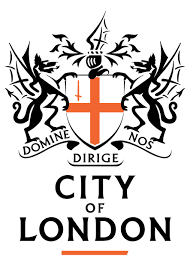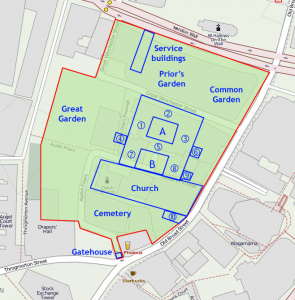In the 1260s “Augustinian Friars” was an extensive friary for 60 friars covering about 5.5 acres (2.3 hectares), with a priory church, two cloisters, a cemetery, and even its own prison. Quiet contemplation later gave way to politics. Hilary Mantel’s two popular historical novels, Wolf Hall and Bring Up The Bodies, focus on the life of Thomas Cromwell, 1st Earl of Essex (c 1485-1540), a lawyer and statesman who served as chief minister to King Henry VIII. Cromwell lived from the 1520s in Austin Friars. He began building his house or ‘palace’ in 1532 on land leased from the priory, and ‘disestablished’ the friary in 1538 himself. Following his beheading for treason and heresy in 1540, Cromwell’s house came into the possession of the Drapers’ Company in 1543, though it burned down in the Great Fire of 1666. Cromwell’s Palace cellars remain under Drapers Hall and the adjacent passages. Archaeological excavations in 1909-1910 and again in the 1980s have confirmed the rich history of the area.
The area has always had strong Dutch connections. Desiderius Erasmus of Rotterdam, philosopher and “Prince of the Humanists”, first came here in 1499 and lodged for a lengthy stay here in 1513, famously leaving without settling his wine bill because of poor quality wine. In 1550, Edward VI gave part of the priory church to the Dutch Protestant community, “notwithstanding that they do not conform with the rites and ceremonies used in our Kingdom”. The Dutch Church survived the Great Fire of 1666, but was destroyed by fire in 1862, and again in a 1940 air raid. The Church was rebuilt from 1950-55. Princess Beatrix (former Queen) of the Netherlands visited the Church in April 2015 to celebrate three prominent milestones, the official opening of the Dutch Centre, the Koning Willem Fonds 140th anniversary, and the 465th year of the Church.
Over the 19th and 20th century Austin Friars became more of a service access to the numerous broking and legal offices of the area, a place to pass through. A major redevelopment in 2015 has made the area once again the ‘heart of Broad Street Ward’.
For more information on the history or the redevelopment.

